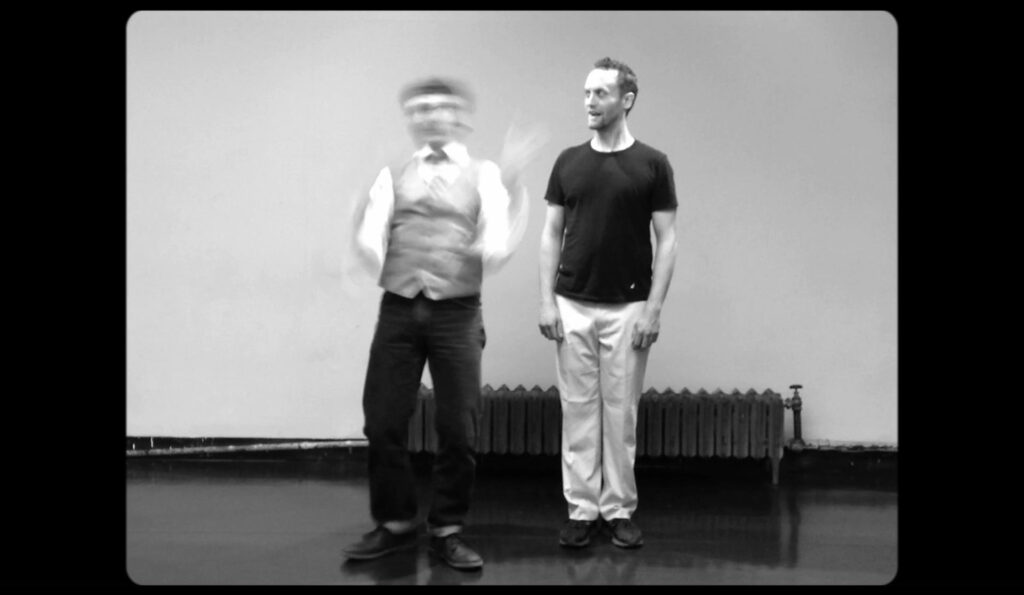One of the facets of silent film, and silent film comedy, is that since the film overall is being projected faster than taking speed, you can take individual shots at different speeds. When run together, the viewer won’t see the difference — as long as the appropriate adjustments in performance tempi are made. Rather than having the lurch of cutting from real-time to “Benny Hill” and back, it’s all one stream.
We played with this in the video you’ll see here, which we took “cranking” at 8 fps.
Sometimes you can tell when this is happening in a silent film by watching the pedestrians in the background, and if they suddenly appear to be walking very quickly, you know there’s been a shift. But your eyes are usually on the main performers who have adjusted their movement speed in accordance with the cranking speed.

What this means is that while the main comedian or performer has the ability to create something that — to our contemporary eyes — resembles the movement seen in an animated cartoon, it means the other performer(s) in the shot have to compensate as well. The comedian doing the complicated work can work at the speed they need to in order to perform the movement or physical business that will become a gag when sped up. The other players must adjust their physicality so that it appears normal when sped up.
When cranking at 8 fps (for 24 fps playback) the other performers must move at 1/3 normal speed. What you’ll see in this video, is that Joel is exaggerating the speed-up by moving as much as possible and that Danny is being as economical and still as possible with his movements.
For another example of this technique, here is a sequence from Chaplin’s City Clights (1931). Click the gear icon and select 0.5x and you’ll get a glimpse of how Charlie Chaplin, Hank Mann and Eddie Baker move. In this instance it’s Charlie and Hank who are taking advantage of the speed-up, and Eddie is the one who’s got to be more careful about holding still. Surviving filming records that I’ve seen indicate this sequence was taken at 16 fps, or 0.66x and there’s no setting for that on YouTube, but you’ll be able to see the choreography. I deconstruct this sequence in a bit more detail in the Criterion video that I made with them, A Study in Undercranking, which you can find in the links below.
Previous posts in this series:
- part 1: getting the movement just right
- part 2: tossing someone away
- part 3: slapstick comedy slap-fight
Links:
- the Filmic Pro app website for info and purchase/downloading
- “Undercranking: The Magic Behind the Slapstick” – my article on the subject published in the October 2015 issue of the Journal of Film Preservation
- ”A Study in Undercranking” – my video about the technique made by Criterion Collection for their release of Charlie Chaplin’s The Kid; available on disc and streaming
- My YouTube channel with silent comedy film undercranking deconstructions
- Parallel Exit physical comedy theater
- Joel Jeske’s website
- Danny Gardner’s website
Brilliant – that was fun and made the technique abundantly clear. Thanks Ben
Thanks Ben,very informative,a few films are run a bit too much,spoils the enjoyment,can you buy DVD player with adjustable speed.ed
IMHO there are many DVD/Blu editions that are run too slow, not quite honoring the speed the filmmakers expected it to be shown at or the speed audiences in the silent era saw it at. While no DVD players have variable speed capability, the open-source freeware VLC from videolan does an excellent job of this.